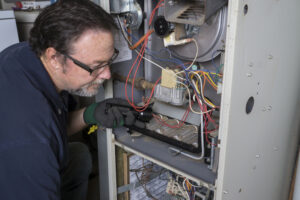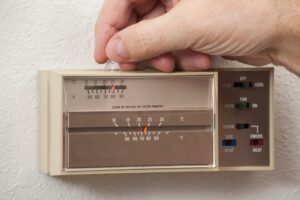Carbon Monoxide in Your Home — How to Prevent Poisoning
The scariest thing about carbon monoxide (CO) poisoning is that it can harm you without you knowing it’s happening. This applies to both exposure to catastrophic amounts, as happens during a major CO leak in a home or automobile, or to long-term exposure to smaller amounts. In the latter case, the symptoms of carbon monoxide poisoning can mimic those of everyday maladies such as colds, allergies and influenza.
Every year in the United States, statistics state, more than 200 people die of accidental CO poisoning, though the actual number is likely far higher since often the cause can’t be pinpointed. So how do you prevent carbon monoxide poisoning?
Schedule Regular Maintenance
Since fuel-burning heating systems, including furnaces, boilers and water heaters, are common sources of CO leaks, regular inspections are highly recommended, both for your safety and that of your family. A well-maintained fuel-burning appliance also will operate more efficiently. Similarly, a trained technician should regularly inspect fireplaces and venting pipes. CO and other toxic gases can get back into the home if they’re not safely vented outside. You may not realize that your older home’s chimney has cracks in the lining, or missing mortar between sections of the linger.
Be Careful if You Have an Attached Garage
Don’t idle a car, run a lawn mower or cook on an outdoor grill in an attached garage or near open windows, even if the sliding garage door is open. Make sure the common wall between garage and house is properly sealed, and that the air pressure in the garage doesn’t get much lower than inside the house. Otherwise, toxic air from the garage will flow into the house any way it can.
Have Working CO Monitors
Ideally, you should have a working carbon monoxide monitor on every level of your home, but especially near the main sleeping area. Follow manufacturer recommendations for how to install and operate CO monitors.
For more information on avoiding carbon monoxide poisoning and for other safety tips for your Chicago area home, please contact us today at Climate Masters Mechanical Contractors, Inc.
Image Provided by Shutterstock.com
You May Also Like

3 Ways Ductwork Impacts HVAC System Performance in Mokena, IL
Ductwork is critical to making any central HVAC system work efficiently. Here are three ways your ductwork influences the performance of the… Continue Reading 3 Ways Ductwork Impacts HVAC System Performance in Mokena, IL…

3 Furnace Odors and What They Mean in New Lenox, IL
When you first turn on a brand-new furnace, you might expect a few mild odors to appear as the system establishes itself.… Continue Reading 3 Furnace Odors and What They Mean in New Lenox, IL…

Do I Need to Replace My Old HVAC Thermostat in Mokena, IL?
A thermostat is like the brain of your HVAC system. If it doesn’t function properly, no part of the HVAC system in… Continue Reading Do I Need to Replace My Old HVAC Thermostat in Mokena, IL?…
